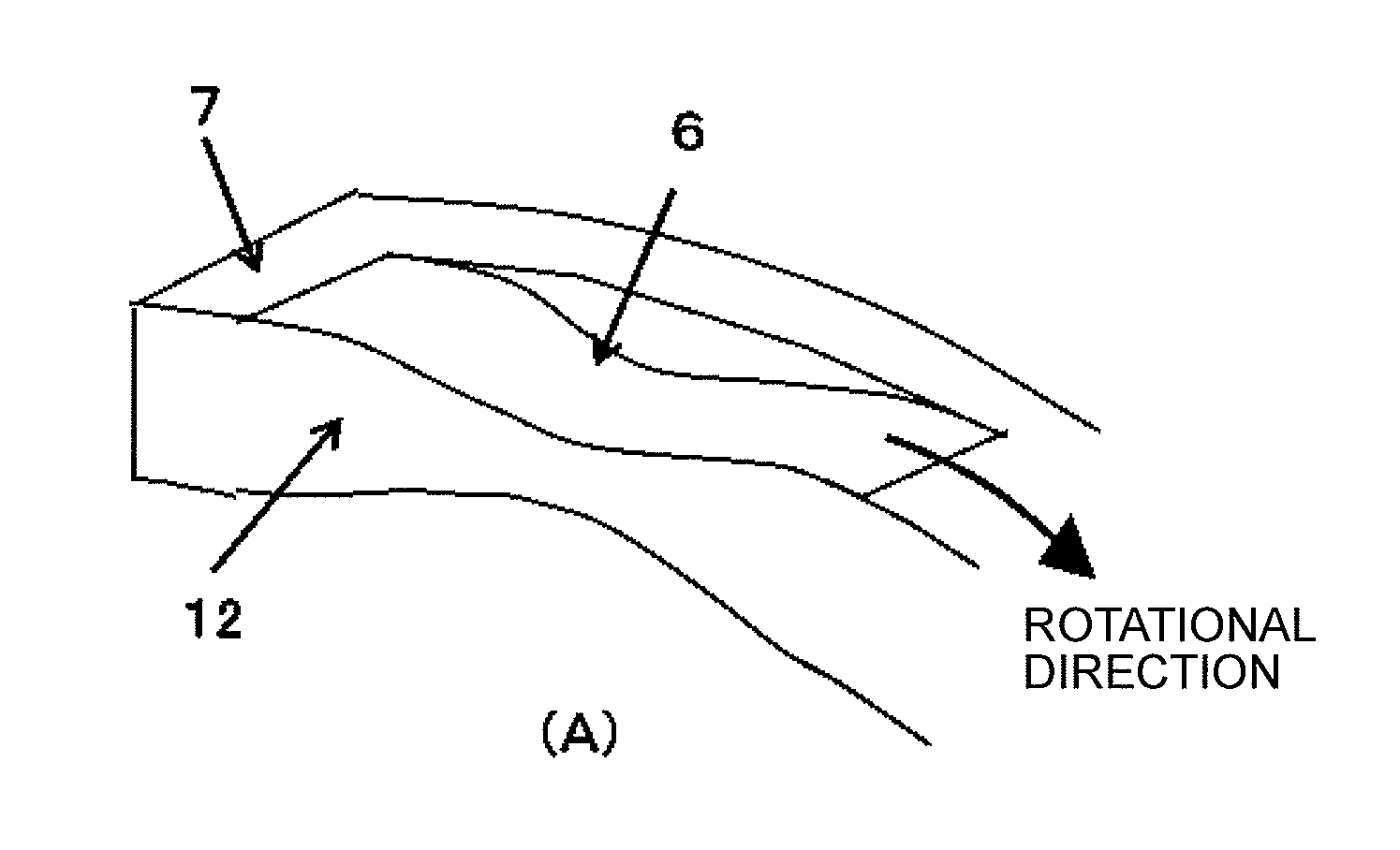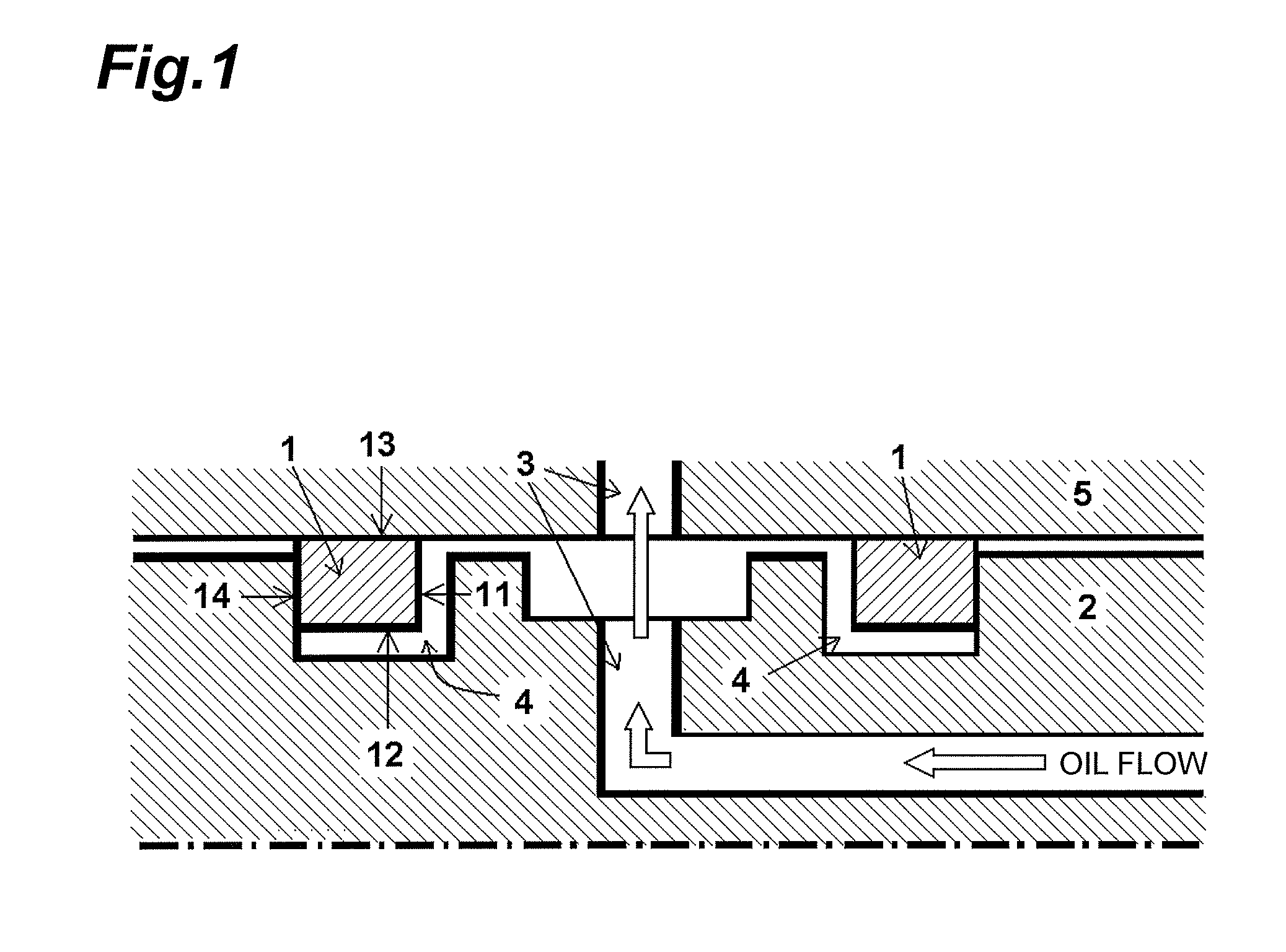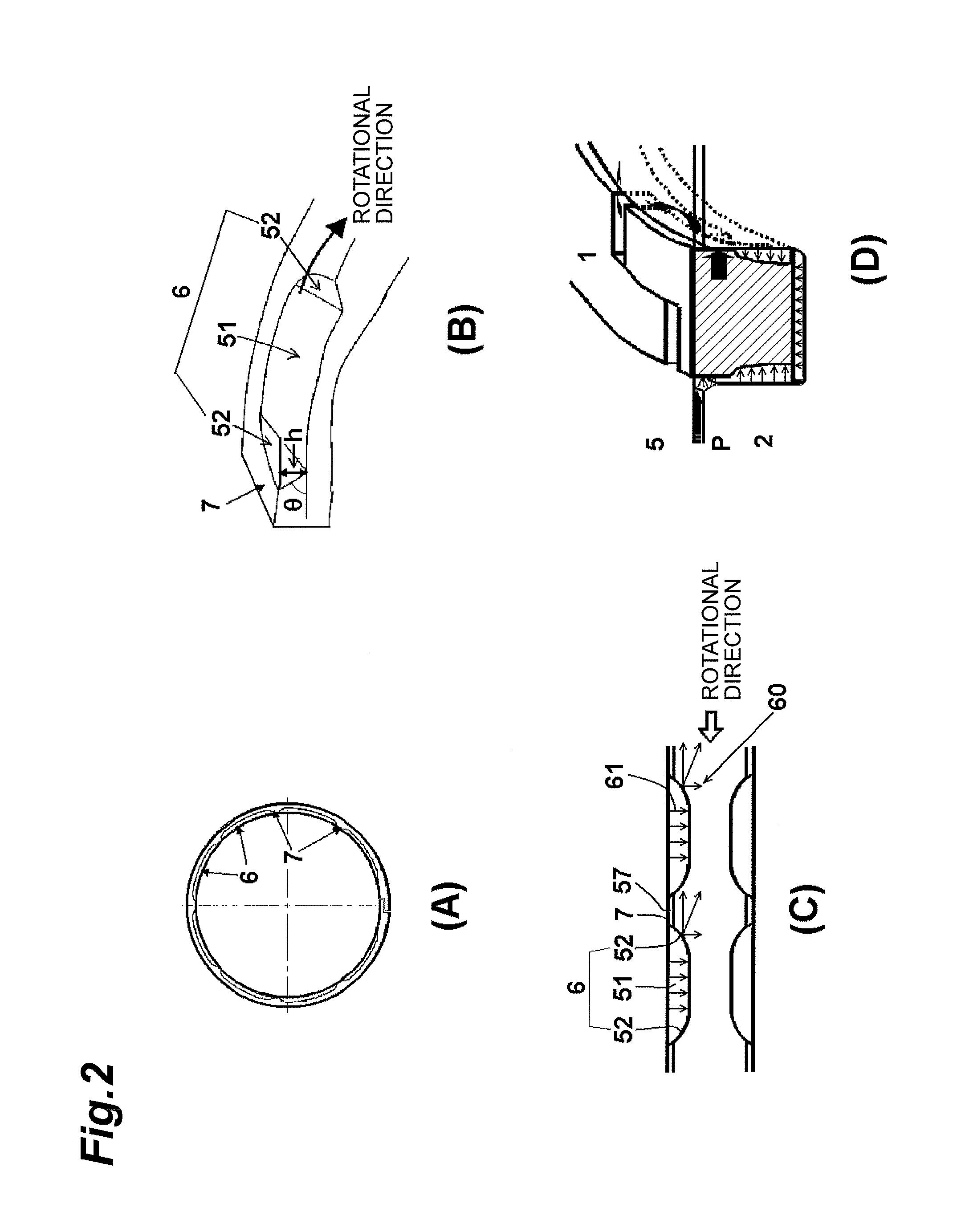Seal ring
a sealing ring and sealing technology, applied in the field of sealing ring, can solve the problems of reducing the capacity of the oil pump, reducing the drive loss of the automatic transmission, and reducing the oil pump capacity, so as to improve the oil squeezing effect, increase the lift, and achieve the effect of reducing friction
- Summary
- Abstract
- Description
- Claims
- Application Information
AI Technical Summary
Benefits of technology
Problems solved by technology
Method used
Image
Examples
example 1
[0038]A seal ring having a recessed section structure shown in FIG. 3A was produced by injection molding using a PEEK material including carbon fibers added thereto. Eight recessed sections each having a deepest portion of 0.22 mm in depth and a circumferential width of 24 mm were formed on each of the contact-side face and the pressure-receiving surface, where the curvature of the squeezing portion was R40. The outer diameter (nominal diameter) of the seal ring was 67 mm, the thickness (radial width) thereof was 2.3 mm, and the width (axial width) thereof was 2.32 mm. The abutment joint was a triple step abutment joint shown in FIG. 5. The depth of the deepest portion was 9.5 where the axial width of the seal ring was 100. The circumferential width of the deepest portion was 16.9 where the circumferential length of one recessed section was 100. The droop length of the R curved surface of the squeezing portion was 13.9 where the sum of the circumferential widths of the squeezing por...
examples 2 to 5
[0045]Seal rings having a recessed section structure shown in FIG. 3A were produced by injection molding using a PEEK material including carbon fibers added thereto, in a similar manner as in Example 1. Here, the curvature of the squeezing portion was changed such that the depth “h” of the deepest portion was 0.03 mm (Example 2), 0.08 mm (Example 3), 0.12 mm (Example 4), and 0.41 mm (Example 5). The outer diameter (nominal diameter) of the seal ring was 67 mm, the thickness (radial width) thereof was 2.3 mm, and the width (axial width) thereof was 2.32 mm. The abutment joint was a triple step abutment joint shown in FIG. 5. The depth of the deepest portion of Examples was 1.3 (Example 2), 3.4 (Example 3), 5.2 (Example 4), and 17.7 (Example 5) where the axial width of the seal ring was 100. The friction and the amount of oil leakage of the resultant seal rings were measured in a similar manner as in Example 1.
[0046]The relations between the depth “h” of the deepest portion and fricti...
examples 6 to 10
[0049]Seal rings having a recessed section structure shown in FIG. 4A were produced by injection molding using a PEEK material including carbon fibers added thereto. Inner walls having a width of 0.3 mm and a circumferential length of 10 mm for each side were provided from the opposite ends of each of the recessed sections toward the center along the inner peripheral end, and an oil introduction opening having a circumferential length of 4 mm was formed at the center. Here, the seal rings were produced with the curvature of the squeezing portion being changed such that the depth “h” of the deepest portion was 0.03 mm (Example 6), 0.08 mm (Example 7), 0.12 mm (Example 8), 0.22 mm (Example 9), and 0.41 mm (Example 10). The outer diameter (nominal diameter) of the seal ring was 67 mm, the thickness (radial width) thereof was 2.3 mm, and the width (axial width) thereof was 2.32 mm. The abutment joint was a triple step abutment joint shown in FIG. 5. The friction and the amount of oil le...
PUM
 Login to View More
Login to View More Abstract
Description
Claims
Application Information
 Login to View More
Login to View More - R&D
- Intellectual Property
- Life Sciences
- Materials
- Tech Scout
- Unparalleled Data Quality
- Higher Quality Content
- 60% Fewer Hallucinations
Browse by: Latest US Patents, China's latest patents, Technical Efficacy Thesaurus, Application Domain, Technology Topic, Popular Technical Reports.
© 2025 PatSnap. All rights reserved.Legal|Privacy policy|Modern Slavery Act Transparency Statement|Sitemap|About US| Contact US: help@patsnap.com



